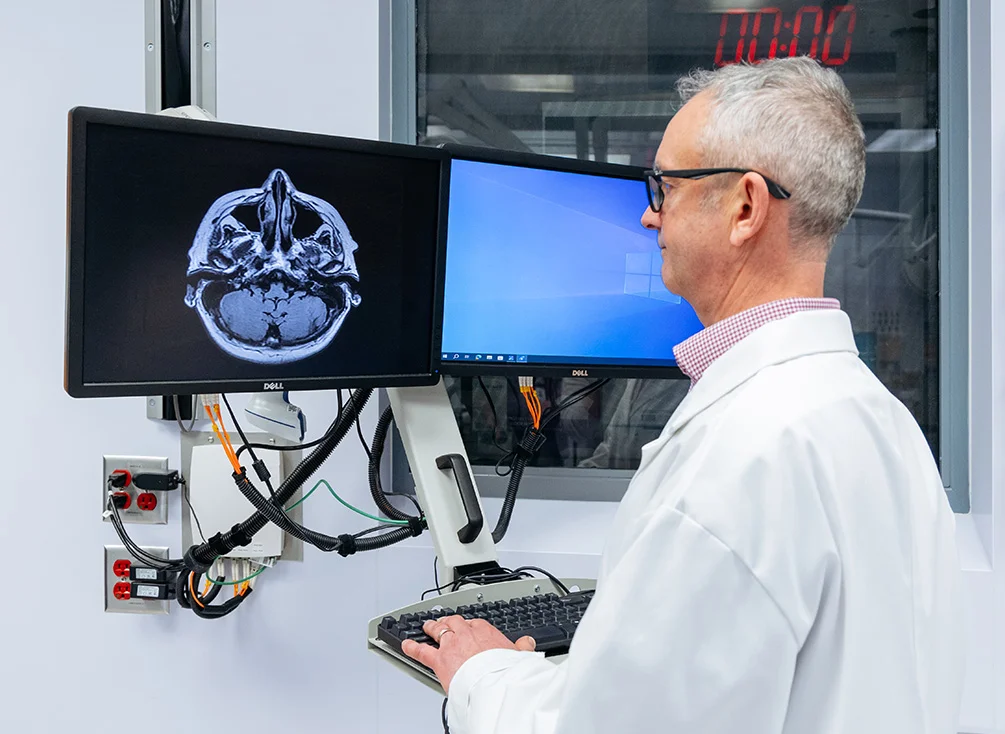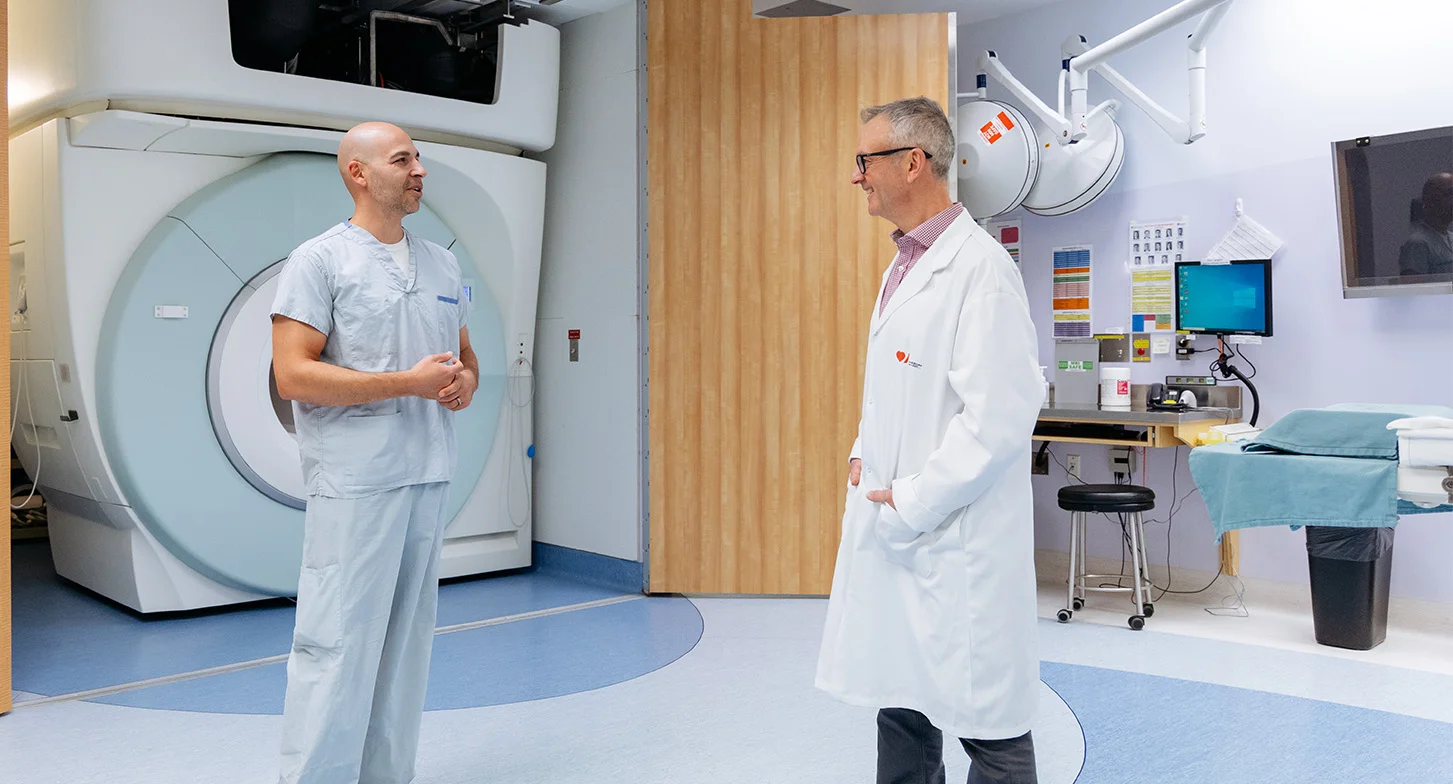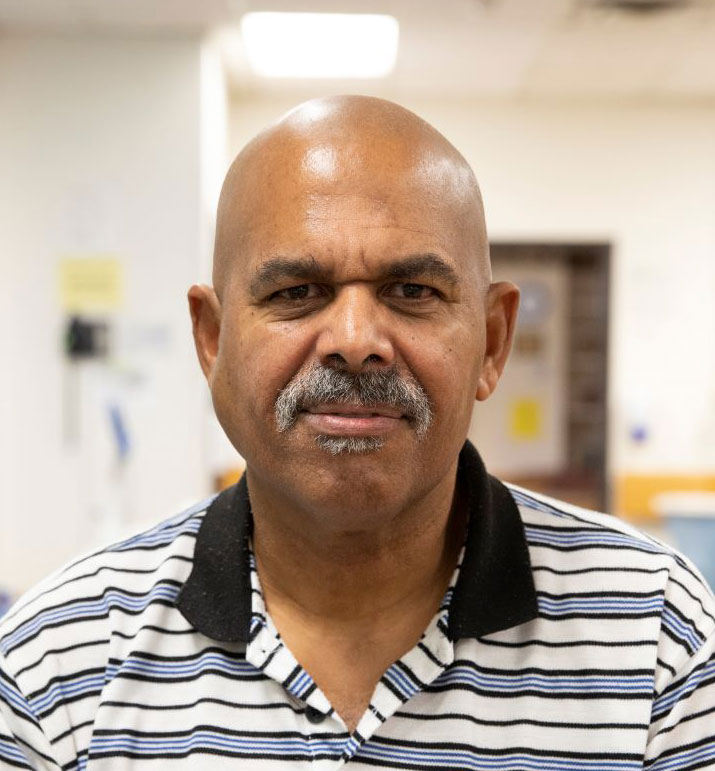
Taking aim at a key cause of dementia
Dr. Philip Barber uses machine learning to take aim at vascular cognitive impairment
Chapter 1 Inspired by patients
Dr. Philip Barber is very clear about the goal of his current research. It’s right there in the title of his study: PREVENT VCI.
VCI is vascular cognitive impairment — a condition of the brain and its blood vessels that causes challenges with cognitive abilities like attention, memory and problem solving. A growing number of people in Canada (more than 450,000) live with VCI, including its most serious form, vascular dementia.
In his role as a professor of neurology and radiology at the University of Calgary, Dr. Barber treats patients who have had a stroke or transient ischemic attack (TIA), also called a mini-stroke. Inspired by these patients, he wants to understand how such events are related to VCI — and how the risk could be reduced.
To prevent VCI, you need to spot it before symptoms appear. But how?
Chapter 2 Clues for earlier detection
Like an explorer tracing a river to its source, Dr. Barber is searching for answers upstream, investigating the vascular conditions that can cause VCI and other forms of dementia. With support from Heart & Stroke donors, he’s studying people who have had a TIA, which is essentially a small stroke that resolves within 24 hours. Using MRI technology, his team captures brain images immediately after the event, then one year later, then four years later.

VCI is an intricate foe. “It’s not just one disease, but many. ” Dr. Philip Barber says.

Dr. Barber works with MRI images to find patterns in TIA patients.

Dr. Philip Barber’s research involves data, machine learning and MRI technology to detect and prevent VCI.
“We're creating a picture of changes in blood flow, the accumulation of microvascular disease and changing brain volume,” Dr. Barber says. Microvascular disease affects the tiny vessels that carry blood deep into the brain; it occurs when vessel walls become thicker and less pliable, reducing blood flow.
The team is also testing people’s cognitive abilities and examining their blood and the fluid that surrounds the brain. They’re looking for biomarkers, including proteins that could indicate Alzheimer’s disease – another leading cause of dementia.
“We know that vascular disease coexists with some neurodegenerative diseases, including Alzheimer’s,” Dr. Barber explains. In fact, they share common risk factors such as high blood pressure and diabetes. “We think that the vascular component, unlike the neurodegenerative component, is largely preventable.”
Chapter 3 Toward personalized prevention
So far, the research is revealing numerous changes in people who have had a TIA.
“We've shown that their brains are shrinking about twice as fast as healthy controls, even within a year or so after the event,” Dr. Barber says. “There are also changes in the deep part of the brain, which possibly correlate with microvascular disease.” His team has also detected declines in memory and processing speed in people after a TIA, even though most are high-functioning.
Some of these findings are made possible by using cutting-edge machine learning (artificial intelligence) to analyze the data and look for patterns. “Machine learning helps us understand how these elements might be related to each other, but also how they might be related to some of the outcomes we're interested in.” Namely: slowing or stopping the disease.
The research is confirming the complexity of VCI, Dr. Barber says. “It’s not just one disease, but many. Every individual's response to those diseases may be very different.”
So, preventing VCI in these patients calls for a more precise, personalized approach. He uses the example of high blood pressure to illustrate variables that could play a part. For example, is it acceptable to use an agreed standard like 120 over 80, or would some benefit from a target blood pressure of 105 over 65?
Dr. Barber is passionate about the importance of healthy lifestyle habits that reduce cardiovascular risk, such as getting regular physical activity and consuming less salt. “I strongly believe in education for early prevention.”
He’s counting on Heart & Stroke support, as well as advances in technology and research capability, to help him find answers. “Because many of these biomarkers are available, we can dive deeper,” he says. “It's an exciting time in healthcare research.”

More stories

Tackling the emotional impacts of stroke
Dr. Swati Mehta helps people embrace an altered future

Giving up is not in my vocabulary
With his wife by his side, Michael is determined to beat stroke.

After a stroke at 24
Surgeons finally put Courtney’s skull back together. Then she had to put her life back together.
